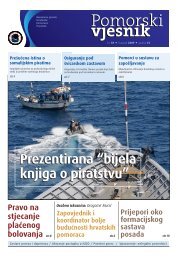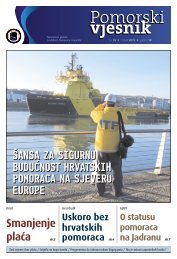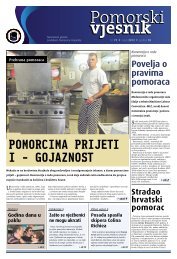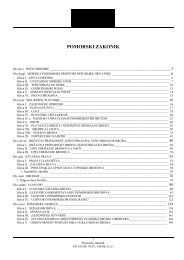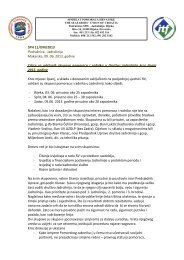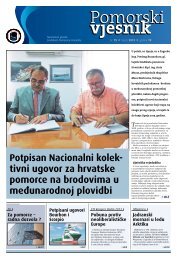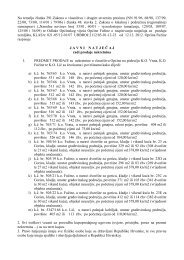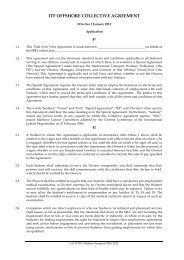Konvencija o radu pomoraca, 2006 (engleski i hrvatski jezik)
Konvencija o radu pomoraca, 2006 (engleski i hrvatski jezik)
Konvencija o radu pomoraca, 2006 (engleski i hrvatski jezik)
Create successful ePaper yourself
Turn your PDF publications into a flip-book with our unique Google optimized e-Paper software.
variations in respect of this Standard on condition that such variations do not result in overall facilities<br />
less favourable than those which would result from the application of this Standard.<br />
20. Each Member may, after consultation with the shipowners’ and seafarers’ organizations concerned,<br />
exempt ships of less than 200 gross tonnage where it is reasonable to do so, taking account of the size of<br />
the ship and the number of persons on board in relation to the requirements of the following provisions<br />
of this Standard:<br />
(a) paragraphs 7(b), 11(d) and 13; and<br />
(b) paragraph 9(f) and (h) to (l) inclusive, with respect to floor area only.<br />
21. Any exemptions with respect to the requirements of this Standard may be made only where they are<br />
expressly permitted in this Standard and only for particular circumstances in which such exemptions<br />
can be clearly justified on strong grounds and subject to protecting the seafarers’ health and safety.<br />
Guideline B3.1 - Accommodation and recreational facilities<br />
Guideline B3.1.1 - Design and construction<br />
1. External bulkheads of sleeping rooms and mess rooms should be adequately insulated. All machinery<br />
casings and all boundary bulkheads of galleys and other spaces in which heat is produced should be<br />
adequately insulated where there is a possibility of resulting heat effects in adjoining accommodation<br />
or passageways. Measures should also be taken to provide protection from heat effects of steam or hotwater<br />
service pipes or both.<br />
2. Sleeping rooms, mess rooms, recreation rooms and alleyways in the accommodation space should be<br />
adequately insulated to prevent condensation or overheating.<br />
3. The bulkhead surfaces and deckheads should be of material with a surface easily kept clean. No form<br />
of construction likely to harbour vermin should be used.<br />
4. The bulkhead surfaces and deckheads in sleeping rooms and mess rooms should be capable of being<br />
easily kept clean and light in colour with a durable, nontoxic finish.<br />
5. The decks in all seafarer accommodation should be of approved material and construction and should<br />
provide a non-slip surface impervious to damp and easily kept clean.<br />
6. Where the floorings are made of composite materials, the joints with the sides should be profiled to<br />
avoid crevices.<br />
Guideline B3.1.2 - Ventilation<br />
1. The system of ventilation for sleeping rooms and mess rooms should be controlled so as to maintain<br />
the air in a satisfactory condition and to ensure a sufficiency of air movement in all conditions of<br />
weather and climate.<br />
2. Air-conditioning systems, whether of a centralized or individual unit type, should be designed to:<br />
(a) maintain the air at a satisfactory temperature and relative humidity as compared to outside air<br />
conditions, ensure a sufficiency of air changes in all air-conditioned spaces, take account of the particular<br />
characteristics of operations at sea and not produce excessive noises or vibrations; and<br />
160



